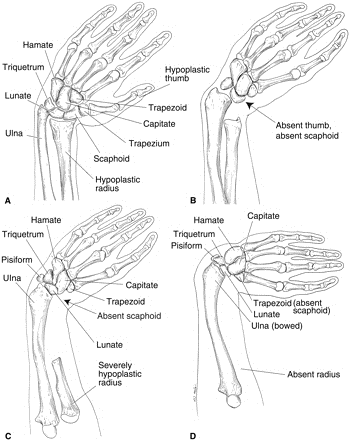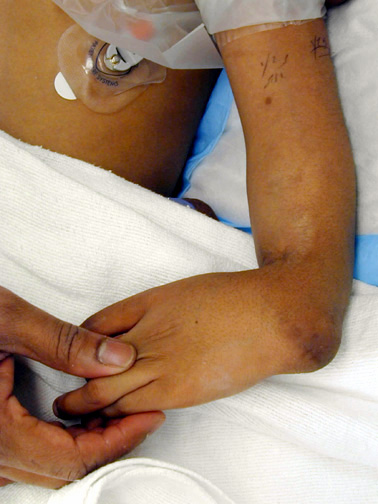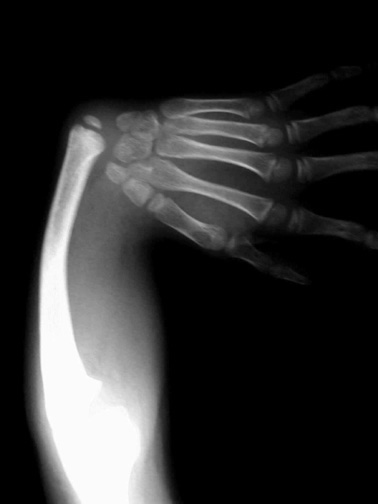Radial Clubhand: Unveiling the Mysteries of a Rare Birth Defect
Radial Clubhand is a rare birth defect characterized by a deformity of hand, with perpendicular relationship between forearm and wrist, and an absent thumb.
Radial Clubhand: A Rare Birth Defect
Radial Clubhand is a rare birth defect characterized by a deformity of the hand, with a perpendicular relationship between the forearm and wrist, and an absent thumb. Diagnosis is made on physical examination.
Epidemiology
The incidence of Radial Clubhand is rare, affecting approximately 1 per 100,000 individuals. It is often bilateral, occurring in 50-72% of cases, and the thumb is usually deficient as well. The condition is believed to be genetically related to the sonic hedgehog gene and is associated with other conditions such as TAR (a recessive condition with thrombocytopenia and absent radius), Fanconi's anemia (a recessive condition with aplastic anemia), Holt-Oram syndrome (a dominant condition characterized by cardiac defects), VACTERL Syndrome (vertebral anomalies, anal atresia, cardiac abnormalities, tracheoesophageal fistula, renal agenesis, and limb defects), and VATER Syndrome (vertebral anomalies, anal atresia, tracheoesophageal fistula, esophageal atresia, renal agenesis).
Classification

Radial Clubhand can be classified using the Bayne and Klug Classification:
- Type I - Deficient distal radial epiphysis
- Type II - Deficient distal and proximal radial epiphyses
- Type III - Present proximally (partial aplasia)
- Type IV - Completely absent (total aplasia - most common)
Presentation

Radial Clubhand is typically diagnosed based on physical examination findings which include a deformity of the hand with a perpendicular relationship between the forearm and wrist, as well as an absent thumb. A careful examination of the elbow should also be performed.
Imaging

Radiographs can be used to visualize the entire radius and often confirm the absence of the thumb. Additionally, laboratory tests such as CBC, renal ultrasound, and echocardiogram should be ordered to screen for associated conditions.
Treatment
Treatment options for Radial Clubhand include nonoperative and operative approaches. Nonoperative treatment may involve passive stretching to target tight radial-sided structures. Observation is indicated if there is absent elbow motion or biceps deficiency. The hand deformity in Radial Clubhand can actually provide extra reach to the mouth in the presence of a stiff elbow.
Operative treatment for Radial Clubhand involves hand centralization, which is usually done when the child is between 6 and 12 months of age and has good elbow motion and intact biceps function. This is followed by tendon transfers. Contraindications for surgery include older patients with good function and patients with elbow extension contracture who rely on radial deviation. The surgical technique involves resection of a varying amount of the carpus, shortening of the extensor carpi ulnaris (ECU), and, if needed, an angular osteotomy of the ulna (care should be taken to spare the ulnar distal physis). In some cases, a two-stage procedure with a distraction external fixator may be performed if there is also thumb deformity, which can be combined with thumb reconstruction around 18 months of age.
Radial Clubhand is a rare birth defect characterized by a deformity of the hand, with a perpendicular relationship between the forearm and wrist, and an absent thumb. Dive into this comprehensive article to discover the epidemiology, etiology, classification, presentation, imaging, and treatment options for this intriguing condition. Unleash your curiosity and gain valuable insights into the world of Radial Clubhand.

